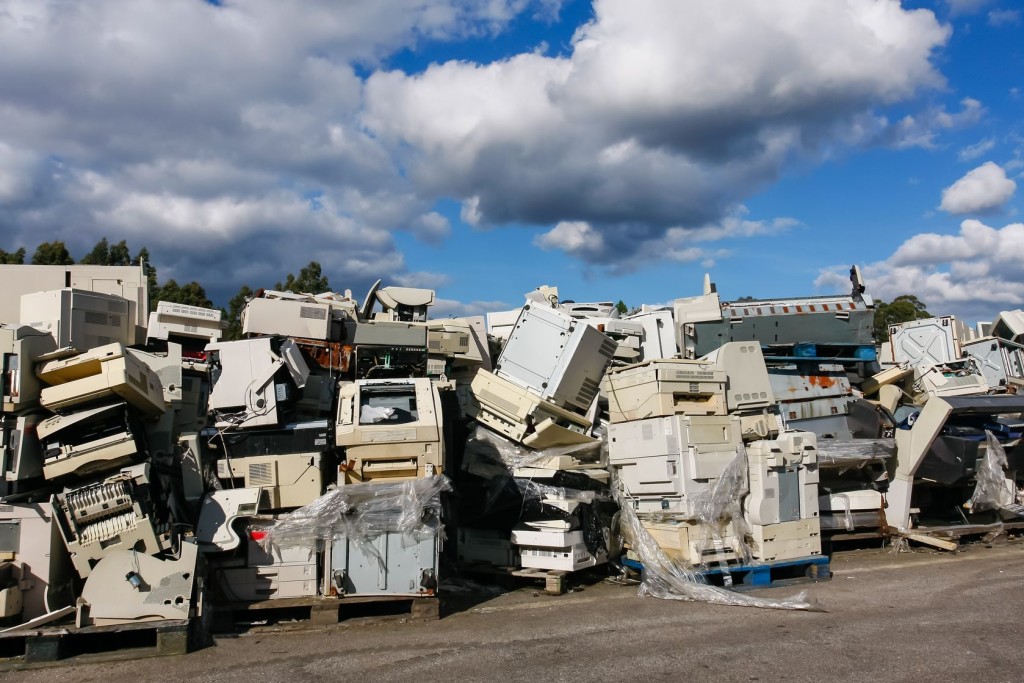E-waste is a very serious environmental hazard everyone should take responsibility for. Nearly everyone on this planet uses some form of electronic and we must all be held accountable for its disposal. Throwing your electronics in your trash can is not an option. Trash ends up in landfills and landfills is where the most damage occurs.
E-waste is everything from your microwave to your cellphone. It is separated into three different categories; Large Household Appliances, IT Equipment and Consumer Equipment. Anything electronic that will soon become outdated and replaced. Each e-waste electronic is classified with respect to 26 common components that are found in them. The components form the “building blocks” of each one and are readily identifiable. They are metal, motor/ compressor, cooling, plastic, insulation, glass, LCD, rubber, wiring/electrical, concrete, transformer, magnetron, textile, circuit board, fluorescent lamp, incandescent lamp, heating element, thermostat, brominated flamed retardant (BFR)-containing plastic, batteries, CFC/HCFC/HFC/HC, external electric cables, refractory ceramic fibers, radioactive substances and electrolyte capacitors. The composition of E-waste is much more diverse and contains more than 1000 different substances, which can fall under hazardous or non-hazardous categories. They consist of ferrous and non-ferrous metals, plastics, glass, wood and plywood, printed circuit boards, concrete and ceramics, rubber and other items. Of the components some contain very toxic substances that if not handled in the correct way could have very negative impacts on your health and land.
Once an item is no longer of any use to us we must find the right way to dispose of it. Landfills are no place for electronics because that is where they sit and can cause the most harm to the environment. When a computer contains highly toxic chemicals like lead, cadmium, mercury we must think of what happens to it once it is in a dump or landfill. It is left “decomposing” there or burned where the toxins are then released into the air, land and water. Once these toxic chemical are in the air we breathe, the water we drink, and the land we use, there is a huge problem.
We do everything to keep our future and well-being safe; we go to the doctor, eat healthy, and generally keep ourselves out of harm’s way but when we don’t care for our land and ignore the proper ways of disposal for e-waste we are doing some of the most damage to ourselves. To pollute the land we live on eventually will hurt us also. There are certified centers for E-waste recycling or “E-cycling” that can properly dispose of your hazardous items. This is the safest way to handle and dispose of your hazardous materials. Take the time to look at how you affect your environment and look into E-cycling today. NTRecycling is a certified E-cycler and is here to help the D.C, Maryland, Virginia area in all their e-waste
disposal needs. Think about your future and call us today.


You must be logged in to post a comment.